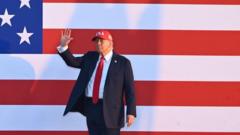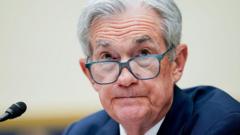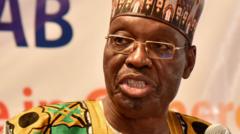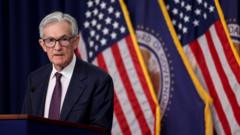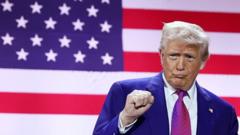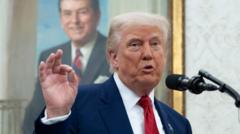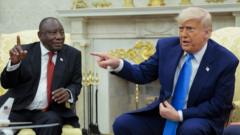The latest labor report reveals a modest increase in employment, raising questions about future economic policies under the new administration.
US Job Growth Hits a Slowdown, Yet Unemployment Remains Low

US Job Growth Hits a Slowdown, Yet Unemployment Remains Low
Despite a dip in job creation, the US economy showcases resilience with stable unemployment rates.
___
Job growth in the United States has decelerated, with employers adding just 143,000 jobs in January, while the unemployment rate has slightly improved to 4% from 4.1%, according to a Labor Department report released recently. This mixed economic signal portrays a robust, albeit quieter, economic landscape as President Donald Trump embarks on his presidency, advocating for significant changes, including government spending cuts, mass deportations of migrants, and increased tariffs on imports. These proposed measures have created a cloud of uncertainty over the future trajectory of the world's largest economy.
The US central bank recently chose not to lower interest rates, a decision that follows a series of reductions initiated in September. Federal Reserve Chairman Jerome Powell noted a calming of concerns surrounding the job market, indicating that uncertainties had stabilized.
Analysts weighed in on the report, suggesting that despite the slowdown in job growth for January, there was little to be alarmed about. They highlighted revisions to earlier data from November and December, which showed better-than-anticipated job growth during those months. Ellen Zentner, Chief Economic Strategist at Morgan Stanley Wealth Management, stated, "A lower-than-expected January payrolls number was more than offset by upward revisions to November and December's totals and a downtick in the unemployment rate."
The health care and retail sectors were significant contributors to the job growth in January, even amid challenges like wildfires and severe winter storms affecting the country. Additionally, average hourly earnings have seen an increase of 4.1% compared to a year earlier. However, annual revisions suggested that the overall job gains for 2024 may be lower than previously projected. Following the news, US shares experienced minimal change.
White House spokeswoman Karoline Leavitt remarked that the report illustrated the economy under President Biden being worse than expected, emphasizing the necessity for Trump's pro-growth policies.
Samuel Tombs, chief US economist for Pantheon Macroeconomics, noted that while fewer jobs were created last year than initially believed, the current trends appear to show a more stable employment outlook. "The trend no longer appears to be deteriorating," he said, but cautioned that a possible "relapse" in job growth could still occur due to low hiring indicators and the ongoing uncertainties surrounding the new administration's economic strategies.
Job growth in the United States has decelerated, with employers adding just 143,000 jobs in January, while the unemployment rate has slightly improved to 4% from 4.1%, according to a Labor Department report released recently. This mixed economic signal portrays a robust, albeit quieter, economic landscape as President Donald Trump embarks on his presidency, advocating for significant changes, including government spending cuts, mass deportations of migrants, and increased tariffs on imports. These proposed measures have created a cloud of uncertainty over the future trajectory of the world's largest economy.
The US central bank recently chose not to lower interest rates, a decision that follows a series of reductions initiated in September. Federal Reserve Chairman Jerome Powell noted a calming of concerns surrounding the job market, indicating that uncertainties had stabilized.
Analysts weighed in on the report, suggesting that despite the slowdown in job growth for January, there was little to be alarmed about. They highlighted revisions to earlier data from November and December, which showed better-than-anticipated job growth during those months. Ellen Zentner, Chief Economic Strategist at Morgan Stanley Wealth Management, stated, "A lower-than-expected January payrolls number was more than offset by upward revisions to November and December's totals and a downtick in the unemployment rate."
The health care and retail sectors were significant contributors to the job growth in January, even amid challenges like wildfires and severe winter storms affecting the country. Additionally, average hourly earnings have seen an increase of 4.1% compared to a year earlier. However, annual revisions suggested that the overall job gains for 2024 may be lower than previously projected. Following the news, US shares experienced minimal change.
White House spokeswoman Karoline Leavitt remarked that the report illustrated the economy under President Biden being worse than expected, emphasizing the necessity for Trump's pro-growth policies.
Samuel Tombs, chief US economist for Pantheon Macroeconomics, noted that while fewer jobs were created last year than initially believed, the current trends appear to show a more stable employment outlook. "The trend no longer appears to be deteriorating," he said, but cautioned that a possible "relapse" in job growth could still occur due to low hiring indicators and the ongoing uncertainties surrounding the new administration's economic strategies.




